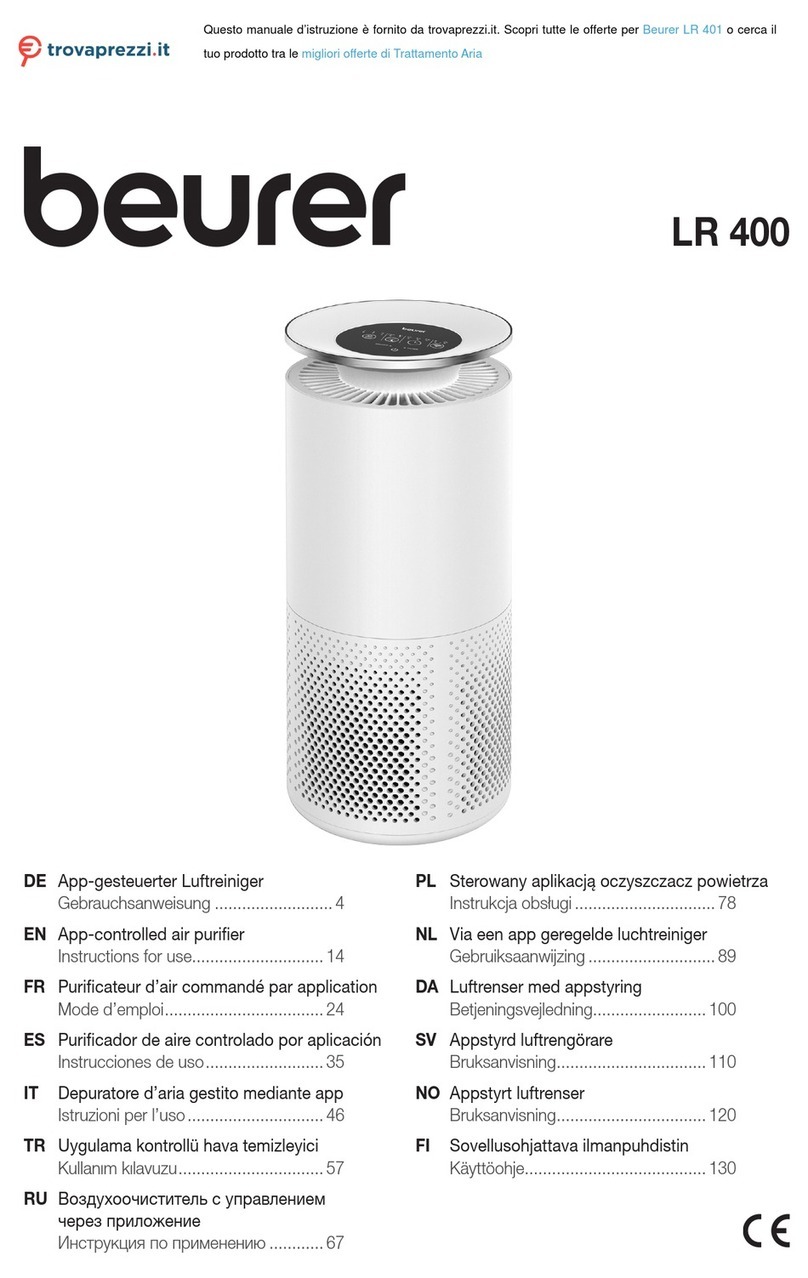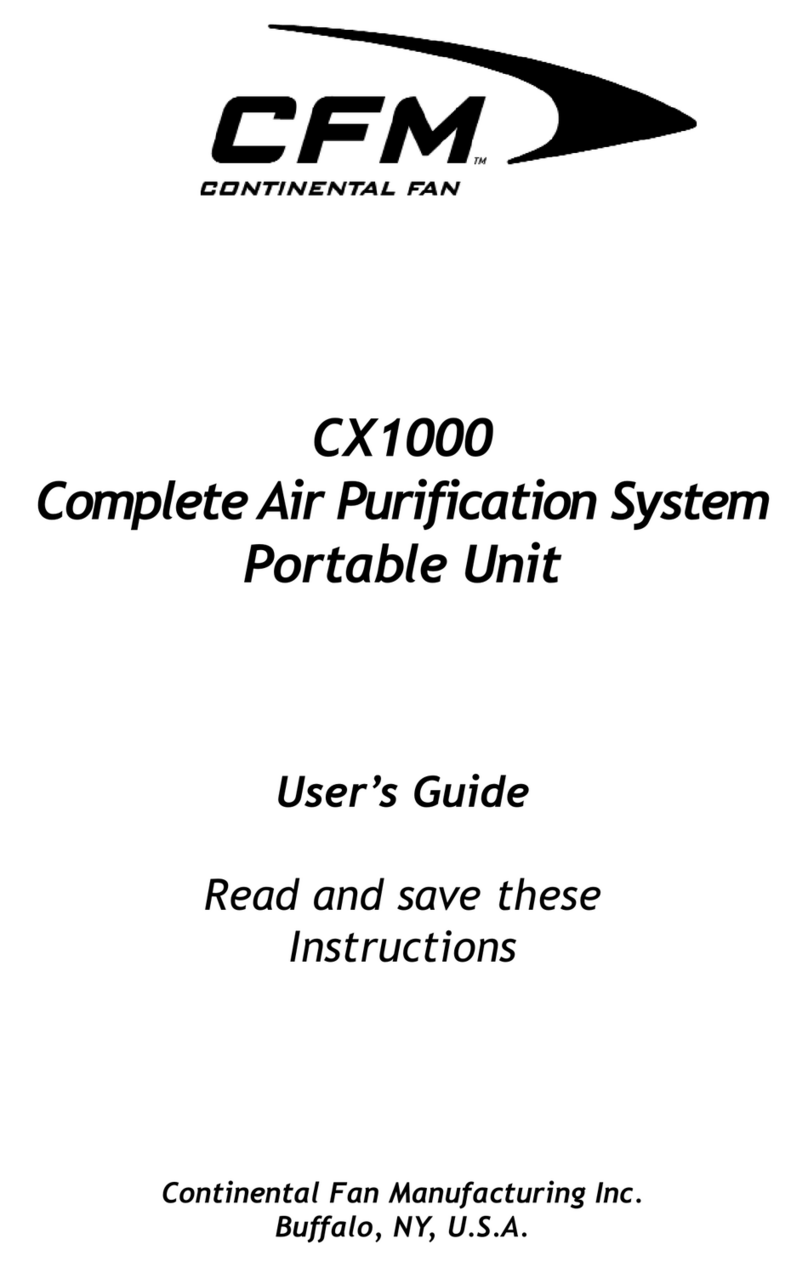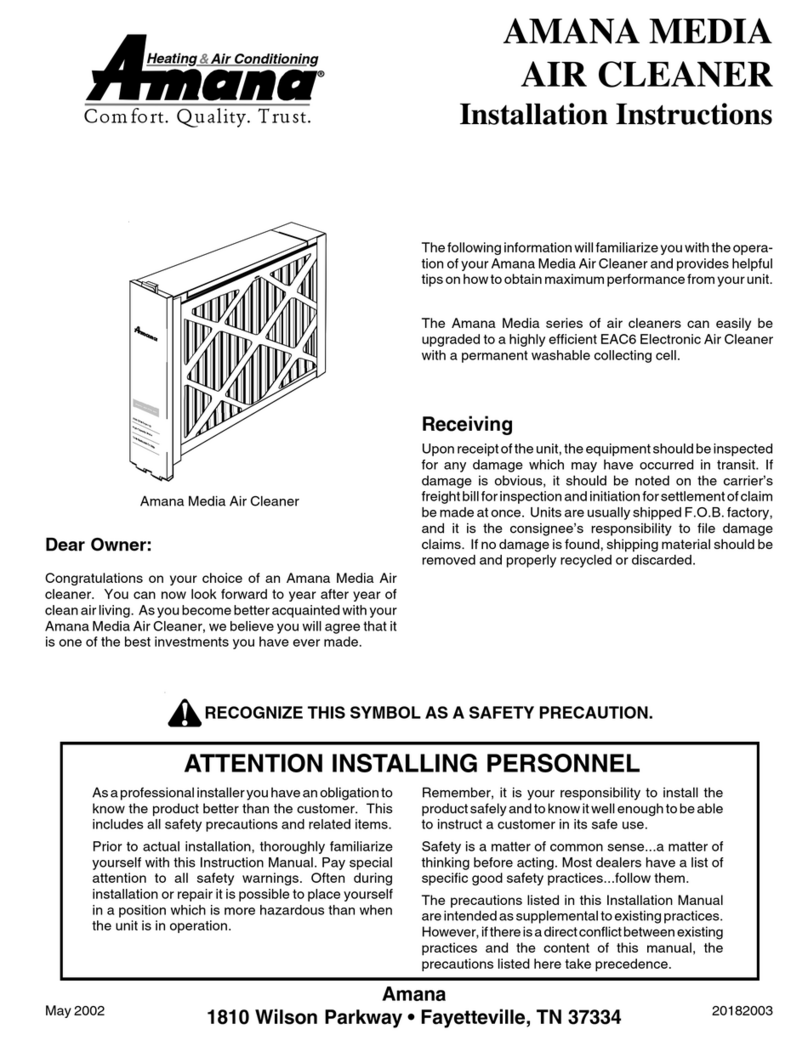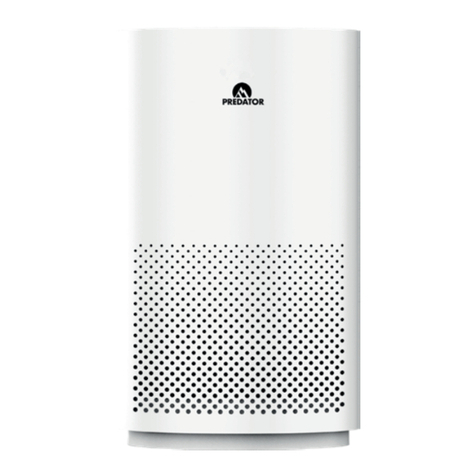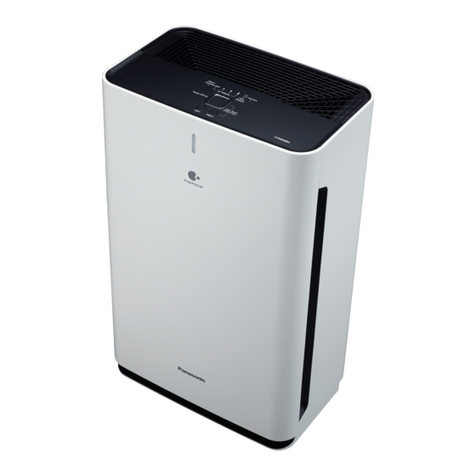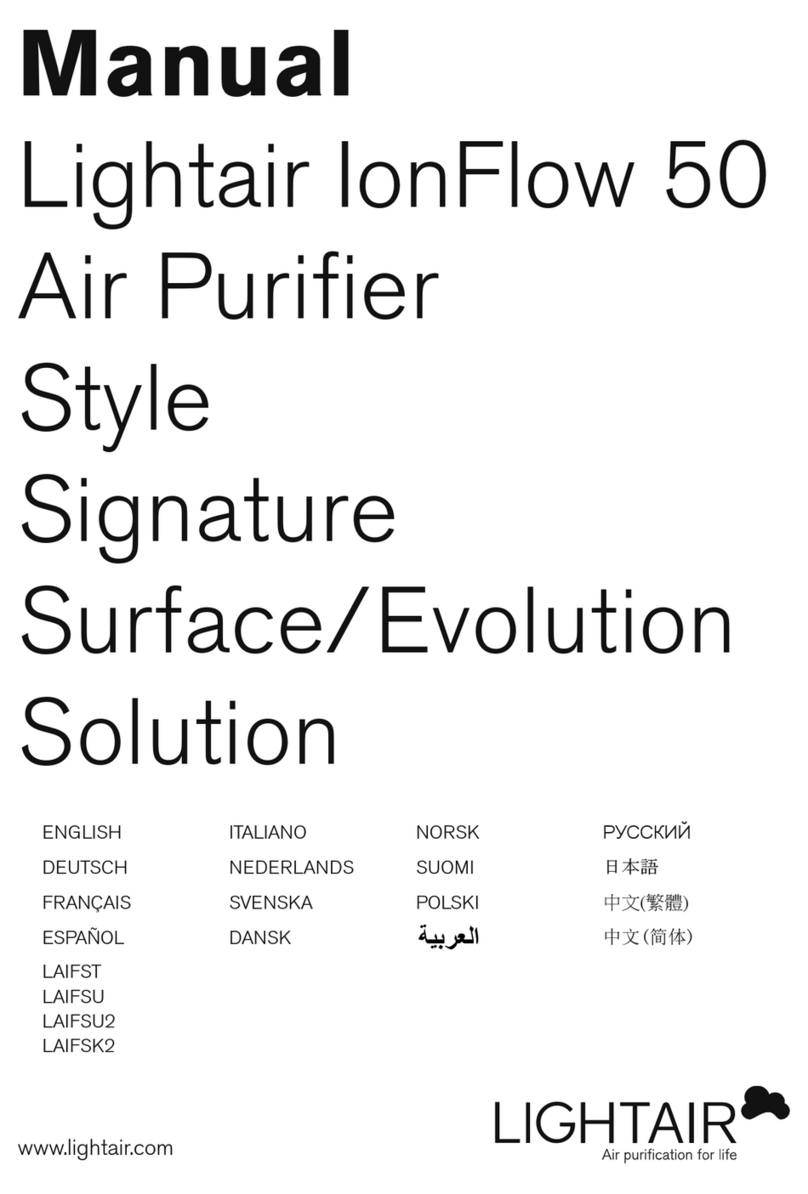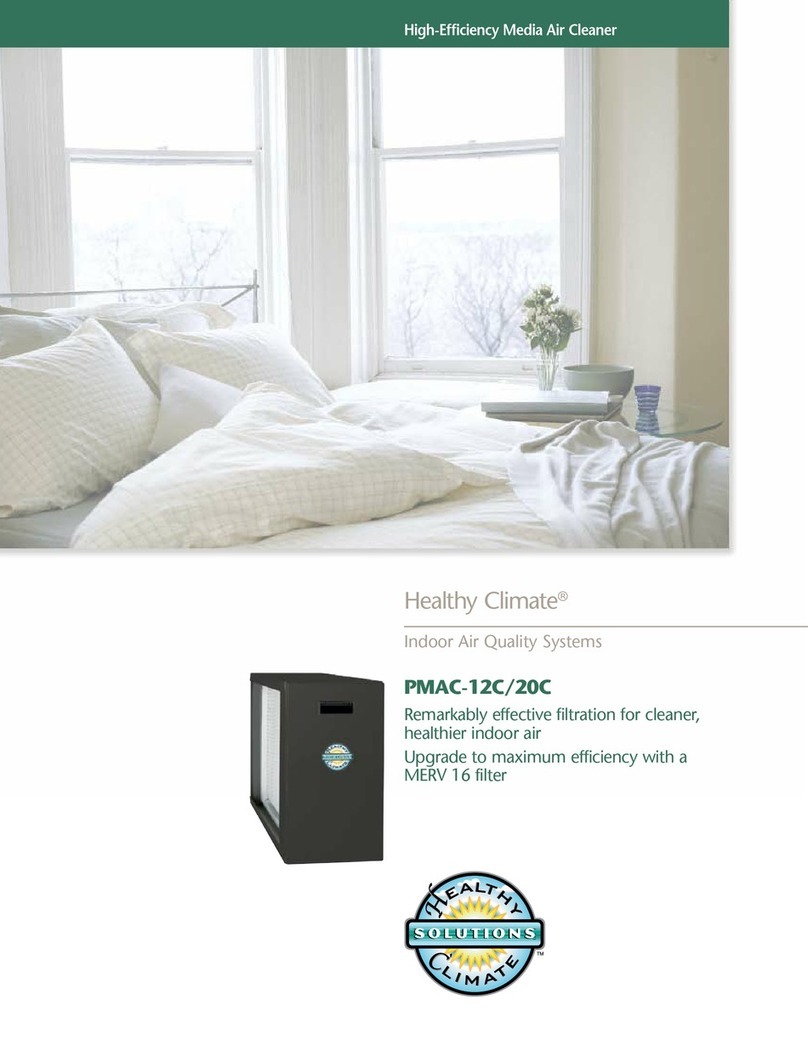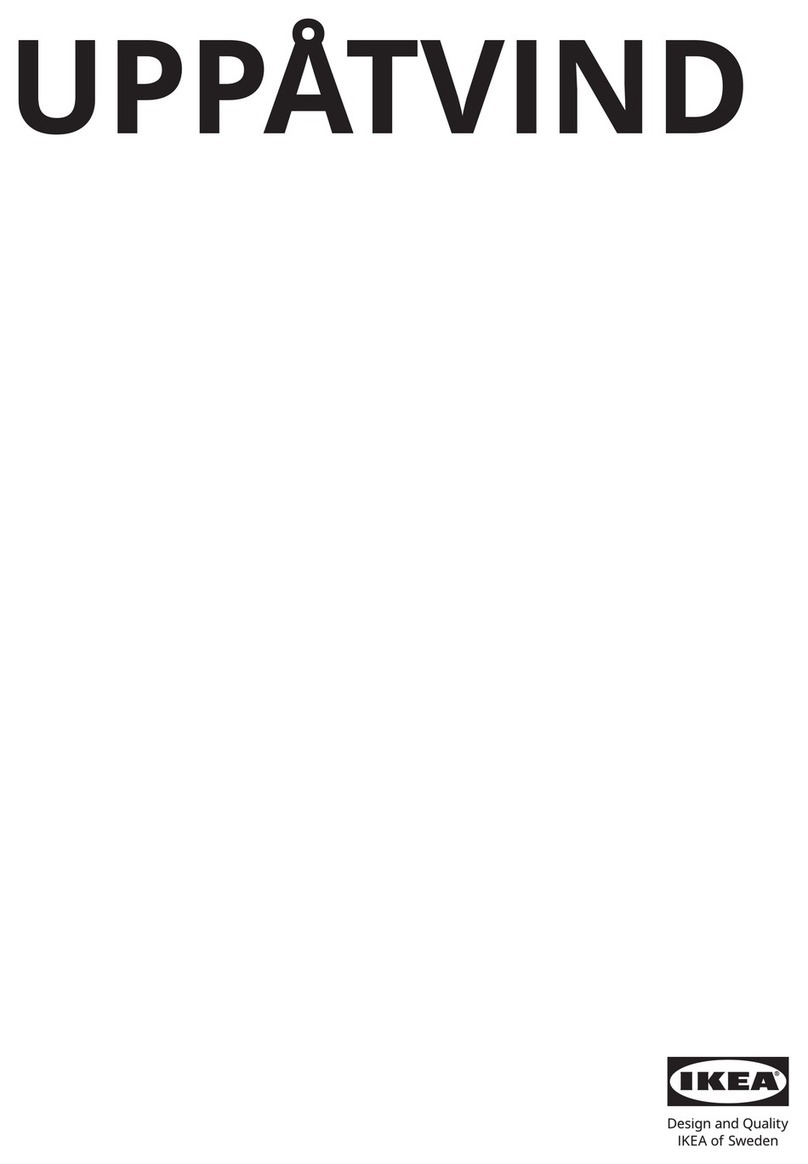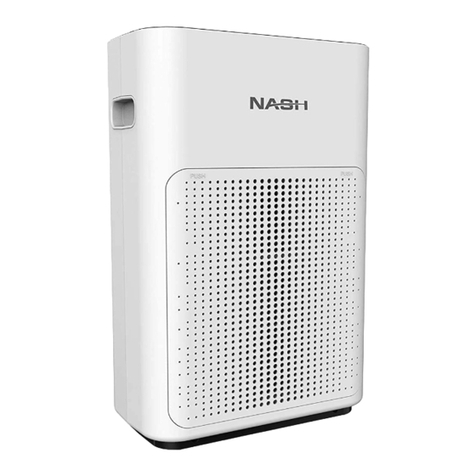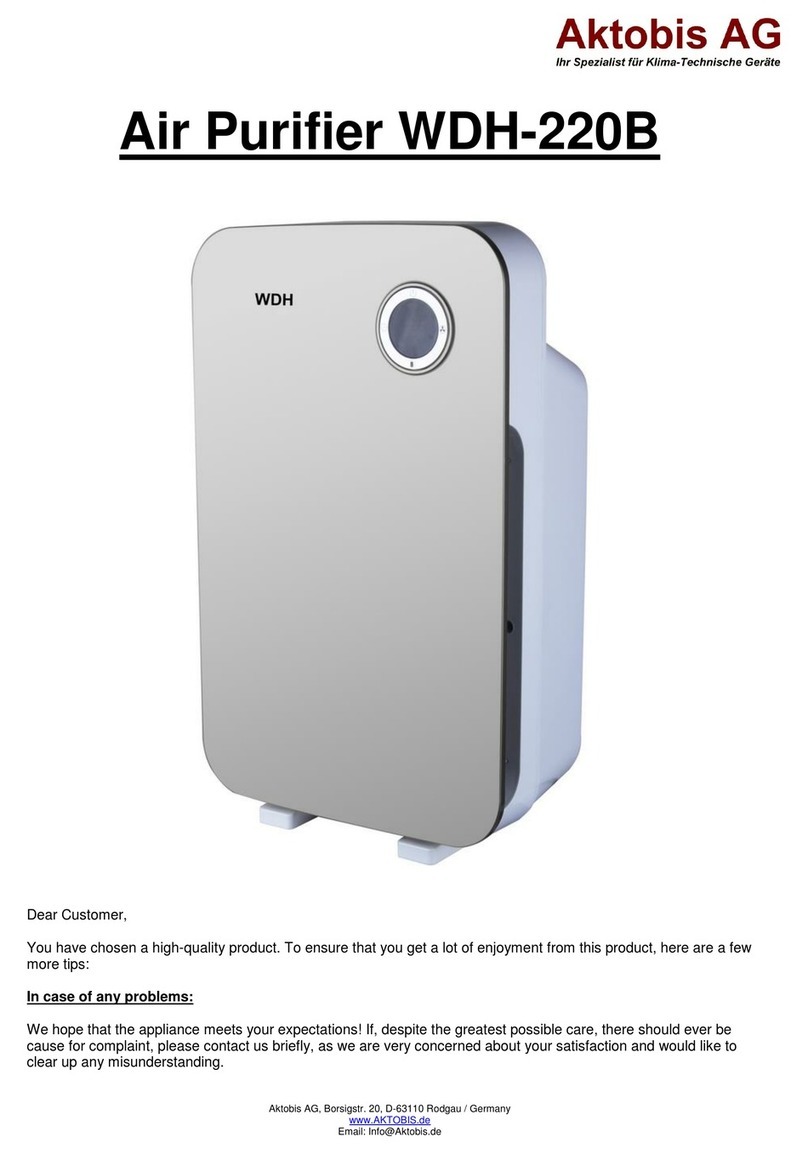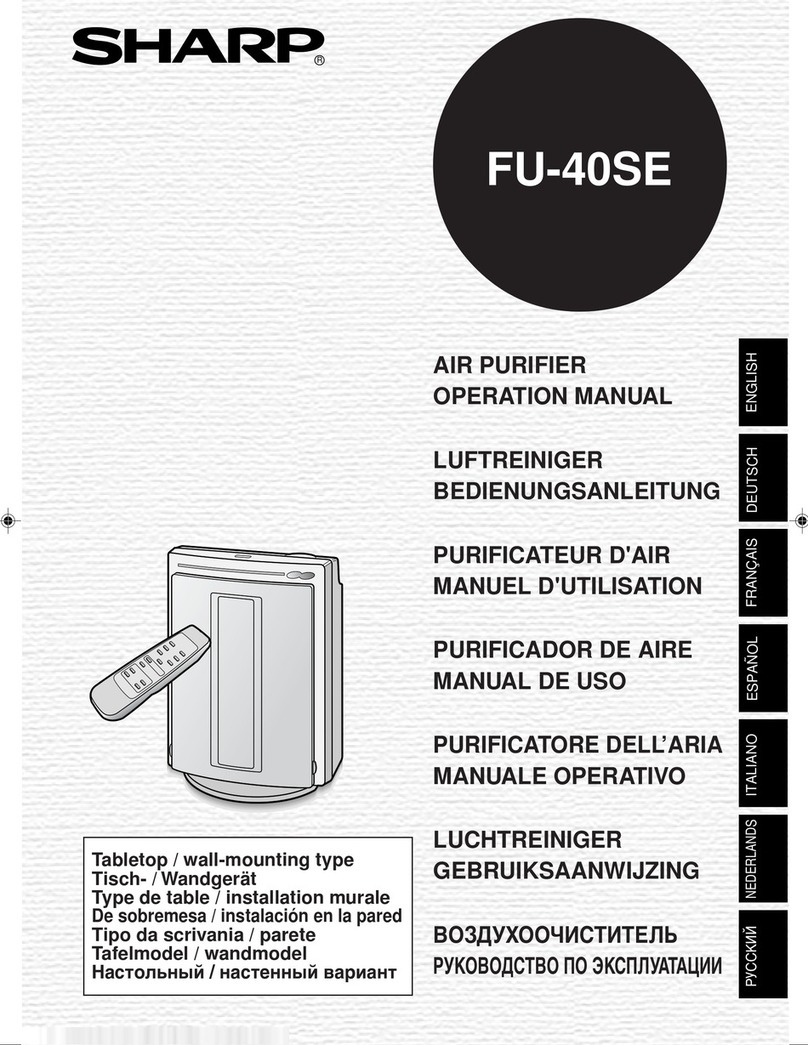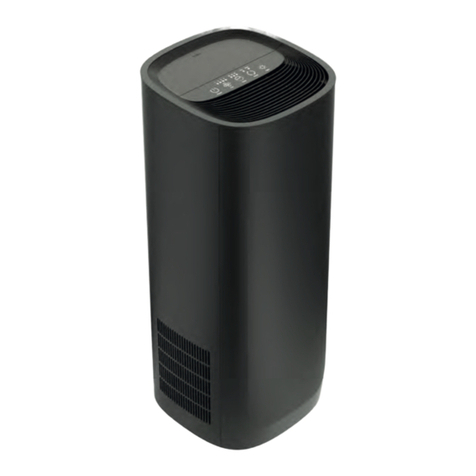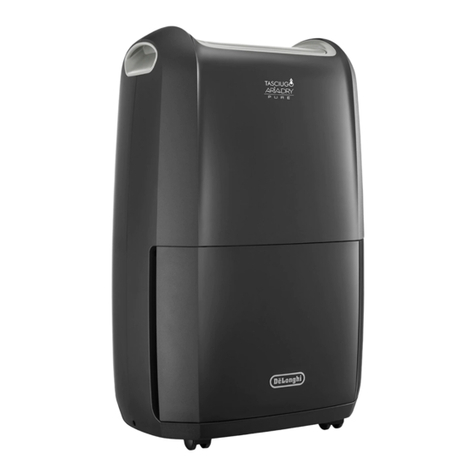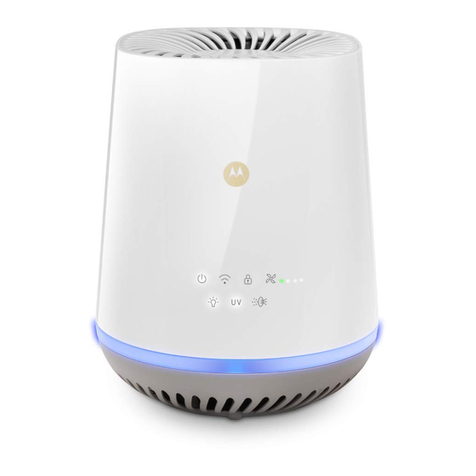Beurer LR 330 User manual

14
Read these instructions for use carefully and keep them for later
use, be sure to make them accessible to other users and observe
the information they contain.
ENGLISH
Dear customer,
Thank you for choosing one of our products. Our name stands for high-quality, thoroughly tested products
for applications in the areas of heat, gentle therapy, blood pressure/diagnosis, weight, massage, beauty, air
and babycare.
With kind regards,
Your Beurer team
Getting to know your device
Humans spend a large proportion of their time indoors. The air indoors is often polluted with dust particles,
pollen, animal hair, odours, harmful gases as well as various bacteria and viruses and, particularly in winter,
is also too dry. Ambient air that is too dry and contaminated may have a number of negative eects. The
LR 330 air purifier humidifies air that is too dry and simultaneously cleans the air with a 3-layer filter system.
The LR 330 air purifier
•
Washes and humidifies air particularly hygienically
•
Filters air with a combi filter (Activated carbon filter against harmful gases and unpleasant odours, EPA filter
E 10 against particles such as bacteria, viruses, mites, pollen and fine dust)
•
Operates quietly with three output levels
•
Can humidify a room up to a preset target humidity (e.g. 55% air humidity)
•
Has a timer function (1 to 12 hours)
•
Suitable for rooms up to 35 m² in size
•
Consumes little energy and automatically switches o if the water runs out
WARNING
•
This device may be used by children over the age of eight and by people with
reduced physical, sensory or mental skills or a lack of experience or knowledge,
provided that they are supervised or have been instructed on how to use the
device safely, and are fully aware of the consequent risks of use.
•
Children must not play with the device.
•
Cleaning and user maintenance must not be performed by children unless
supervised.
•
Disconnect the device from the mains supply during cleaning.
•
Clean the device using only the methods specified. Under no circumstances
must liquid enter the fan unit.
•
Do not use any solvent-based cleaning products.
•
If the mains connection cable of this device is damaged, it must be disposed
of. If it cannot be removed, the device must be disposed of..

15
1. Included in delivery ................................. 16
2. Signs and symbols .................................. 16
3. Warnings and safety notes ....................16
4. Intended use ............................................ 17
5. Device description................................... 18
6. Initial use .................................................. 19
6.1 Removing the air purifier ..................... 19
6.2 Setting up the air purifier..................... 19
6.3 Preparing for the application ............... 19
7. Usage........................................................ 20
7.1 Switching on the air purifier ................ 20
7.2 Timer function .................................... 20
7.3 Selecting the humidity level .............. 20
7.4 Setting the target humidity ............... 20
7.5 Empty water tank ............................. 20
7.6 Replacing the combi filter
and pre-filter ...................................... 21
8. Cleaning and maintenance ..................21
9. Accessories and replacement parts ...23
10. What if there are problems?................. 23
11. Disposal.................................................. 23
12. Technical specifications.......................23
13. Warranty / Service ................................. 24
Table of contents
Principle of air cleaning
1.The quiet and low-energy fan sucks the contaminated air in from the side air inlet.
2.The contaminated air is pre-cleaned by the built-in combi filter (activated carbon filter/EPA filter). In addi-
tion, the pre-filter filters larger particles and hairs (in general) from the air.
3.The air passes over the disc set that continuously rotates in the tray and picks up calcium-free humidity.
4.
The cleaned air that is enriched with water is emitted via the air outlet on top of the Air purifier into the
ambient air.
The EPA E 10 filter has a filter performance of 85%. That means that 85% of particles (e.g.bacteria,
viruses and fine dust) can be filtered out.
A relative humidity of between 40 and 60% is generally recommended. This value is often not reached in winter
when cold air enters living spaces that are being aired and is then warmed up. Air can absorb more humidity
in line with increasing air temperature. The air tries to compensate by taking humidity from other sources such
as mucous membranes, skin, furniture and accessories, etc. This may have a number of negative eects:
•
Mucous membranes dry out, lips become chapped and dry, eyes become irritated
•
Exhaustion, tiredness and diculty concentrating
•
Pets and plants are put under unnecessary strain
•
Promotion of dust and electrostatic charging of textiles made of synthetic fibres, carpets and plastic floor
coverings
•
Damage to furniture made of wood, particularly parquet floors
•
Detuning of musical instruments
Contaminated, unfiltered air can have the following eects:
•
Infections and respiratory diseases are more likely to occur
•
Damage to health through harmful gases

16
1. Included in delivery
•
1x Air purifier
•
1x combi filter (activated carbon/EPA filter class E 10)
•
1x pre-filter
•
1x these instructions for use
2. Signs and symbols
The following symbols appear in these instructions for use:
WARNING
Warning instruction indicating a risk of injury or
damage to health
Manufacturer
IMPORTANT
Safety note indicating possible damage to the
device/accessory
CE labelling
This product satisfies the requirements
of the applicable European and national
directives.
Product information
Hinweis auf wichtige Informationen
20
PAP
Dispose of packaging in an environmentally
friendly manner
Read the instructions
Certification symbol for products that are
exported to the Russian Federation and
members of the CIS
Disposal in accordance with the Waste Electrical
and Electronic Equipment EC Directive – WEEE "Geprüfte Sicherheit" safety mark
3. Warnings and safety notes
Read the notes carefully! Non-observance of the following information may result in personal injury or ma-
terial damage.
WARNING
Keep packaging material away from children to avoid danger of suocation.
Electric shock
WARNING
As with every electrical device, use this Air purifier carefully and cautiously, in order to avoid hazards due to
electric shock.
• Therefore, observe the following instructions for use:
– do not operate the device at voltages other than those indicated on the device (the type plate is located
underneath the device)
– never if it or its accessories show visible signs of damage
– not during a thunderstorm
•
In the event of defects or operational faults, switch the device o immediately and disconnect it from the
mains socket. Do not pull on the mains cable or on the device to disconnect the plug from the socket. Never
hold or carry the device by the mains cable. Keep the cables away from hot surfaces.
•
Always switch o the device before disconnecting it from the mains.
•
Never disconnect the mains plug with wet or damp hands.
•
Keep the device away from sources of heat as the housing could melt and trigger a fire.
•
Ensure that the openings of the Air purifier and the mains cable do not come into contact with water, steam
or other liquids.
•
Do not use the device in close proximity to flammable or explosive gas mixtures.
•
Never reach for a device that has been submerged in water. Disconnect it from the mains plug immediately.
•
Do not use the device if it or its accessories are visibly damaged.

17
Repairs
WARNING
•
Only specialist personnel may perform repairs on electrical devices. Improper repairs may subject users to
considerable danger. For repairs, please contact Customer Services or an authorised retailer.
•
Do not open the fan unit.
Risk of fire
WARNING
There is a risk of fire if the device is used improperly or these instructions for use are ignored.
Therefore, observe the following instructions for using the Air purifier:
•
Never use underneath a cover, such as blanket, pillow, etc.
•
Never use near petrol or other highly flammable substances.
Handling
IMPORTANT
The device must be switched o and disconnected from the mains after every use and before cleaning.
•
Do not place any objects in device openings or in rotating parts. Ensure that the moving parts can move
freely at all times.
•
Do not place any objects on the device.
•
Do not expose the device to high temperatures.
•
Protect the device against sunlight and impacts and do not drop it.
•
Never shake the device.
•
Avoid water damage by handling the device carefully (e.g. water damage from splashing in the vicinity of
wooden floors).
•
Place the device on a firm, level and water-resistant surface.
4. Intended use
This Air purifier is intended to clean and humidify the air indoors.
WARNING
If you suer from severe respiratory or lung disease, consult your doctor before using the Air purifier.
This device must only be used for the purpose for which it was designed and in the manner specified in the
instructions for use. Improper use can be dangerous. The manufacturer is not liable for damage resulting from
improper or careless use.

18
5. Device description
1 Housing cover 7 Pre-filter
Filters coarse dust and dirt, such as hairs
2 Water tank and screwed plug 8 Filter cover
3 Air outlet 9 Mains cable
4 Illuminated display 10 Disc set
5 Air inlet 11 Tray
6
combi filter (activated carbon/EPA filter class E 10)
Activated carbon filter: against harmful gases,
VOCs (volatile organic compounds) and unpleas-
ant odours
EPA filter class E 10: Filters particles such as bac-
teria, viruses, mites, pollen and fine dust
Display and buttons
Buttons Display
1 ON/OFF button 6 Timer symbol
2 TIMER button 7 Water tank empty symbol
3 FAN SPEED button 8 Change filter symbol
4 TARGET HUMIDITY button 9 Target humidity/current humidity
5 CHANGE FILTER button 10 Fan speed settings
1
2
3
4
5
678
9
10
Other manuals for LR 330
2
Table of contents
Other Beurer Air Cleaner manuals
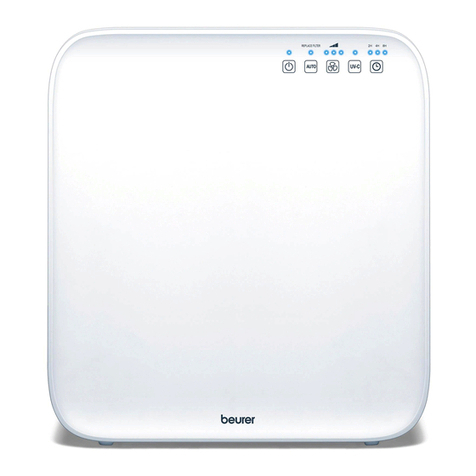
Beurer
Beurer LR 310 User manual

Beurer
Beurer LR 330 User manual

Beurer
Beurer LR 330 User manual
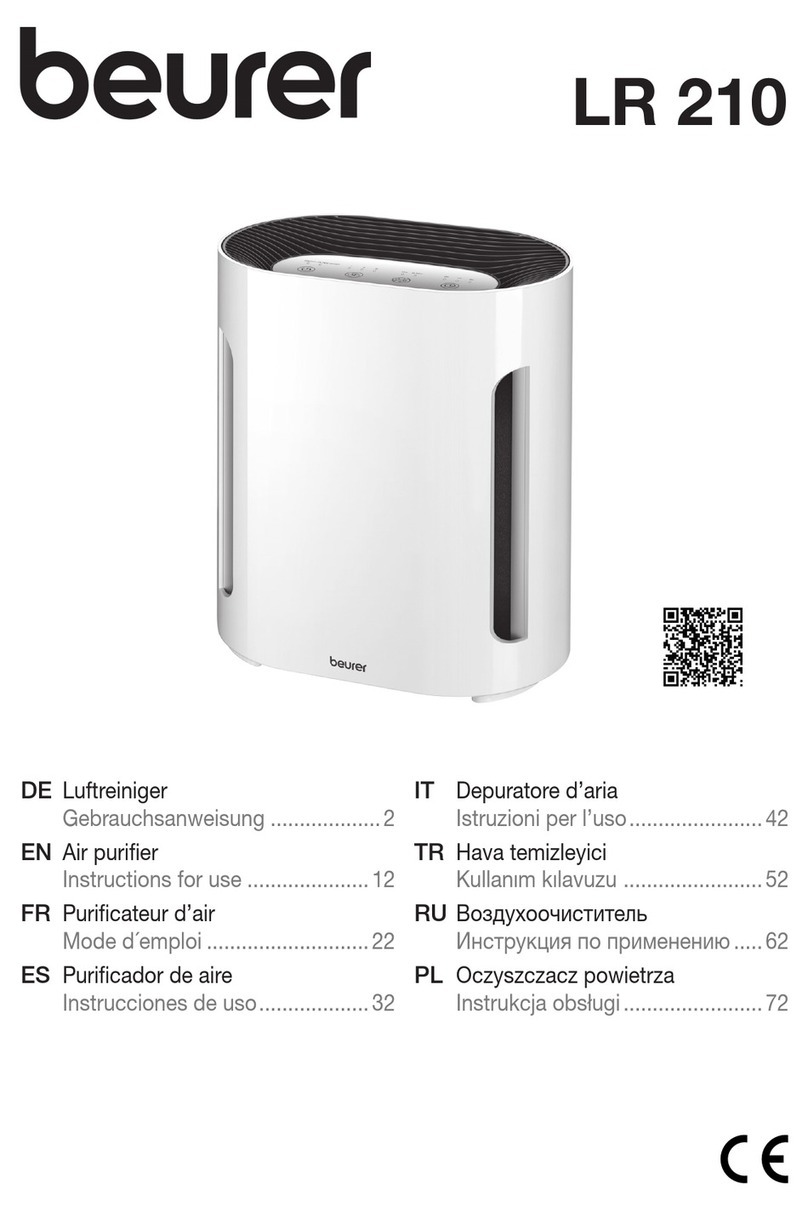
Beurer
Beurer LR 210 User manual

Beurer
Beurer LR 200 User manual

Beurer
Beurer LR 200 User manual

Beurer
Beurer LR 500 User manual
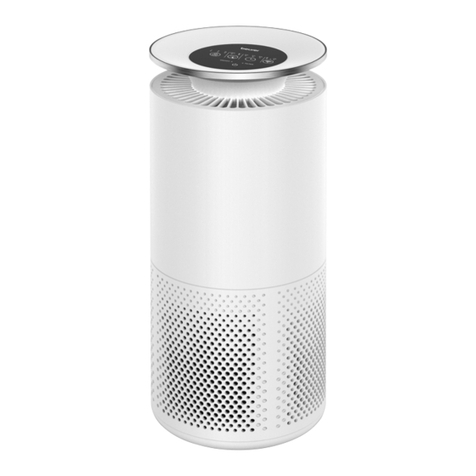
Beurer
Beurer LR 400 User manual
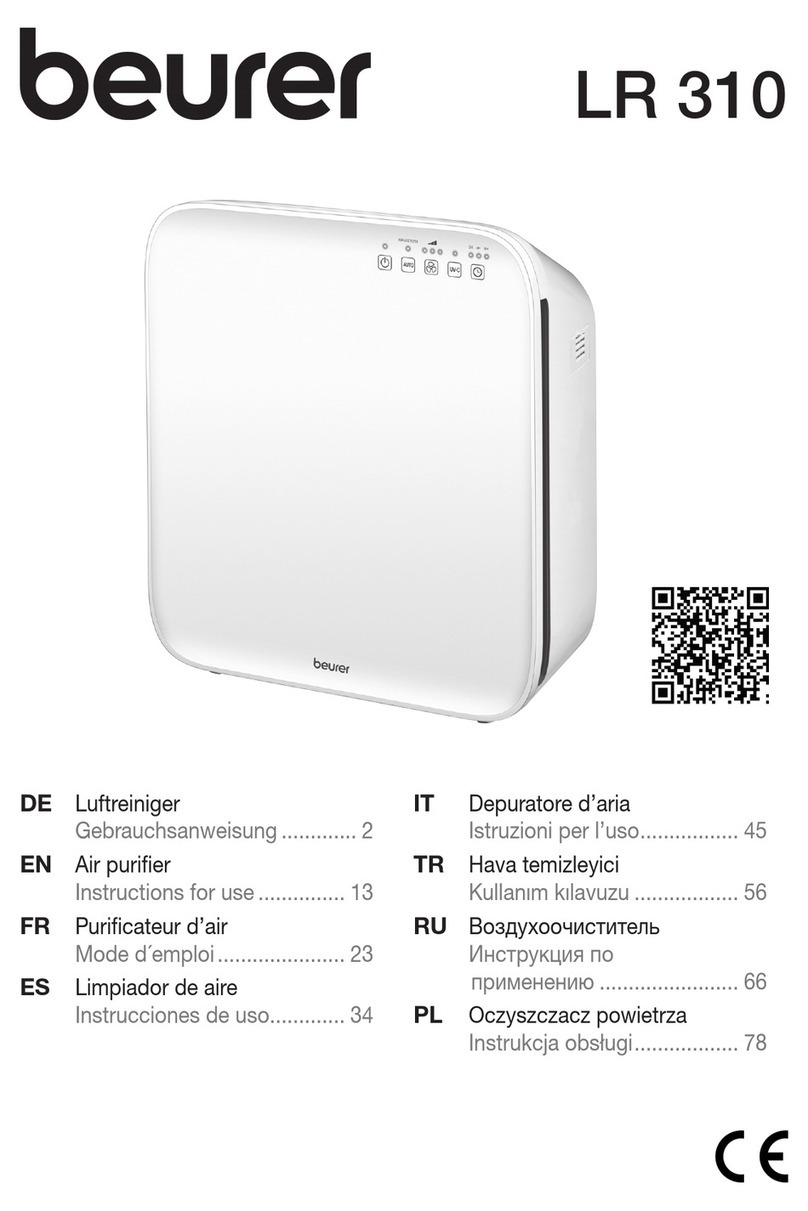
Beurer
Beurer LR 310 User manual

Beurer
Beurer LR 300 User manual

